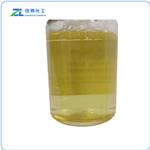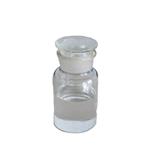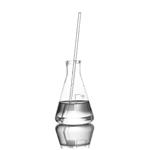
1-Nonanal
- Product Name1-Nonanal
- CAS124-19-6
- CBNumberCB2667328
- MFC9H18O
- MW142.24
- EINECS204-688-5
- MDL NumberMFCD00007030
- MOL File124-19-6.mol
- MSDS FileSDS
Chemical Properties
| Melting point | -18°C |
| Boiling point | 93 °C/23 mmHg (lit.) |
| Density | 0.827 g/mL at 25 °C (lit.) |
| vapor pressure | ~0.26 mm Hg ( 25 °C) |
| FEMA | 2782 | NONANAL |
| refractive index | n |
| Flash point | 147 °F |
| storage temp. | Store below +30°C. |
| solubility | Chloroform (Slightly), Ethyl Acetate (Slightly) |
| form | Liquid |
| Specific Gravity | 0.827 |
| color | Clear colorless to light yellow |
| Odor | Very powerful and diffusive fatty-floral, waxy odor. |
| Odor Type | aldehydic |
| biological source | synthetic |
| Viscosity | 1.9mm2/s |
| Odor Threshold | 0.00034ppm |
| Water Solubility | Practically insoluble |
Safety
| Symbol(GHS) |

|
|||||||||
| Signal word | Warning | |||||||||
| Hazard statements | H315-H412 | |||||||||
| Precautionary statements | P264-P273-P280-P302+P352-P332+P313-P362+P364 | |||||||||
| Hazard Codes | Xi | |||||||||
| Risk Statements | 36/37/38 | |||||||||
| Safety Statements | 26-37/39 | |||||||||
| RIDADR | 3082 | |||||||||
| WGK Germany | 2 | |||||||||
| RTECS | RA5700000 | |||||||||
| TSCA | Yes | |||||||||
| HazardClass | 9 | |||||||||
| PackingGroup | III | |||||||||
| HS Code | 29121900 | |||||||||
| Hazardous Substances Data | 124-19-6(Hazardous Substances Data) | |||||||||
| Toxicity | LD50 orally in Rabbit: > 5000 mg/kg | |||||||||
| NFPA 704: |
|




